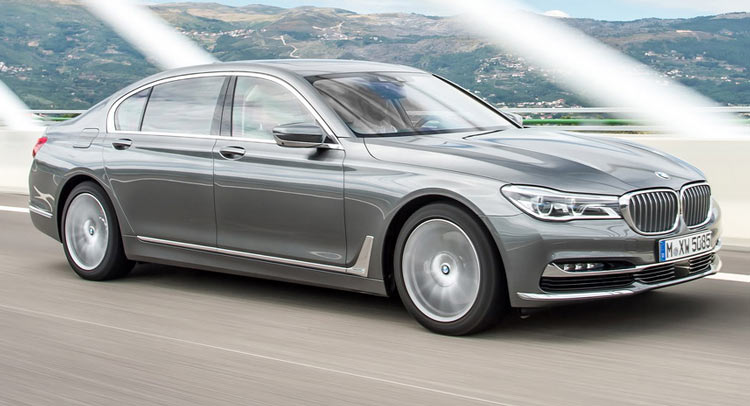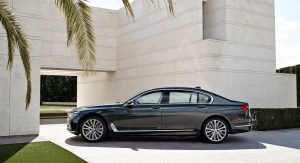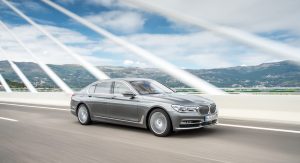What’s better than a tri-turbo straight-six diesel? Why a quad-turbocharged version, of course, and that’s what BMW is bringing to the table with their 750d and 750Ld xDrive saloons.
The new 3.0-liter engine features multi-stage turbocharging with four turbochargers and common-rail direct injection delivering 400PS (395hp) and peak torque of 760Nm (560 lb-ft), making it the world’s most powerful six-cylinder diesel. Its serves up over 450Nm (332 lb-ft) of torque at just 1,000 rpm and puts its maximum 760Nm (560 lb-ft) on tap between 2,000 and 3,000 rpm.
Whereas BMW’s older tri-turbocharged 3.0-liter inline-six that’s still used in the M550xd and X5 M50d models producing 381PS (375bhp) and 740Nm (546 lb-ft), has a pair of compact low-pressure turbochargers and a single large low-pressure turbocharger, the new diesel unit has two pairs of compact turbochargers.
“Generally speaking, the two low-pressure turbochargers and one of the two high-pressure turbos are permanently in action,” says BMW. “Only under hard acceleration from idle will the two low-pressure turbochargers be bypassed by means of a flap control system. This allows boost pressure to be built up even more quickly. The second high-pressure turbocharger is brought into play at an engine speed of about 2,500 rpm.”
Connected to a standard eight-speed automatic and BMW’s xDrive all-wheel drive, the new quad-turbo diesel accelerates the regular wheelbase 750d to 100km/h (62mph) in 4.6 seconds and the long-wheelbase 750Ld in 4.7 seconds, an improvement of 0.3 seconds over their predecessors.
Not only are the new models faster and 5 percent more powerful, but they’re also 11 percent more fuel efficient returning a combined fuel consumption between 5.9 and 5.7 l/100km (47.9 – 49.6 mpg UK or 39.9 – 41.3 mpg US) and CO2 emissions between 149 and 154 g/km, depending on the model and tire specifications.
BMW’s new 750d xDrive and 750Ld xDrive will not make the trip across the Atlantic, but in Europe, they will become available from July 2016.







